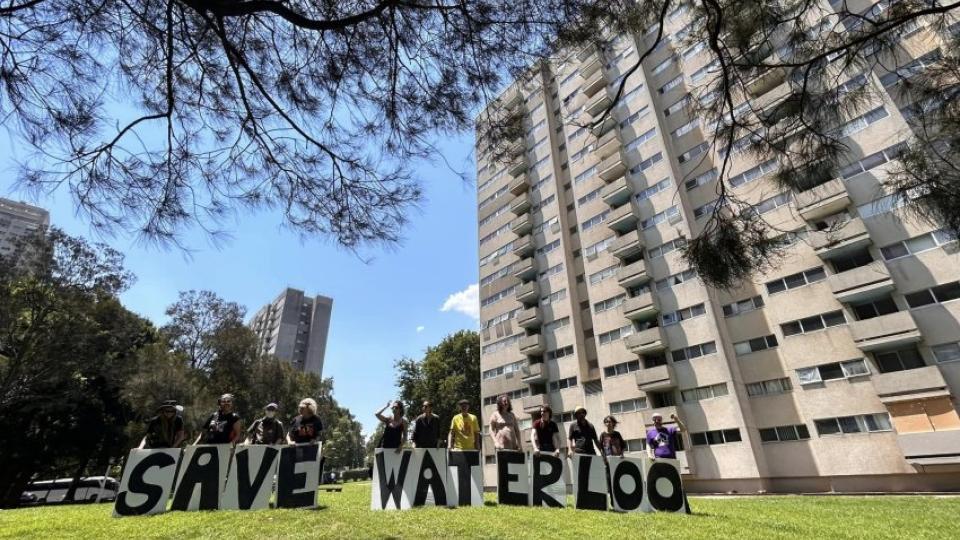Why can’t we all have housing? Or even secure, affordable housing?

Let’s start with the scope of the problem.
Anglicare released its 2024 Rental Affordability Snapshot early this year, based on 46,000 rental listings around Australia. Affordability, it noted, had “crashed to record lows”.
Taking 30% of household income as the maximum affordable rent, Anglicare’s researchers found that 0% of the offerings on the national private rental market were affordable for someone on Youth Allowance or JobSeeker; 0.2% for a person on the Age Pension; 0.6% for a person earning the full-time minimum wage; 0.9 % for a kindergarten teacher; and 1.5% for a nurse.
And it’s getting worse — fast.
Nationally, rents for all dwellings rose by 8.5% in the year to April — far above either inflation or wage rises.
The median weekly rent (half above, half below) in 1981 was less than 20% of the average weekly income. Anglicare reports the figure is now around 40%.
Here in Adelaide, the rental market is the tightest in the country.
For a single person on parenting payment with one or two children, the number of affordable, appropriate rental properties is precisely zero.
Who’s to blame? It’s not migrants.
Population growth (the important figure) since 2021 has averaged just under 1% annually — a historic low. Between 1950 and 1970, it was above 2%.
Migration was booming, as was dwelling construction. Housing was affordable even for families on a single wage.
Remember the South Australian Housing Trust? In 1954 it built a staggering 47% of all dwellings constructed in South Australia. Rents were low, set at a modest share of household incomes. Between rents and house sales, the Housing Trust was self-funding over four decades, and didn’t cost taxpayers a cent.
That was in the days when expanding industries in SA were desperate for workers — and the employer class saw to it that cheap, abundant housing would be there to draw them from across the globe.
Then the boom decades ended.
From the 1970s, public housing began to be sold off to fund government spending, and allow taxes to be kept low for businesses and the rich.
The job of providing housing was left to the market.
Prices remained fairly restrained for some years. But except for a tiny, remnant public sector, house-building was now strictly for profit — and the big profits weren’t in providing affordable dwellings for working people.
Then a strong upward trend in prices began in the late 1990s. This reflected deliberate policies of the John Howard Coalition government.
In a bribe to shore up the votes of the well-off, Howard brought in big tax cuts for property investors. The result of negative gearing and capital gains tax concessions is that one in six taxpayers now owns an investment property.
But not, usually, a newly-built property. Instead, “hot money” has flooded into the market for existing dwellings. In recent months, fewer than 1 in 4 loans to housing investors has been for new construction.
Housing is less and less something people buy for their own use. Instead, it’s being bought with a view to trading for profit.
The result has been a crazy price spiral that is breaking the budgets of working people.
What to do?
Rents must be frozen, at least until inflation brings the burden on renters back to the levels of earlier decades.
The housing-price casino has to be shut down, starting with abolishing the tax rorts. Tax incentives should be available only for building new housing that adds to existing stock.
Planning is needed to address the shortage of land for housing. Skilled construction workers must be trained, or recruited via immigration. Local councils have to be funded to cut building approval times.
Above all, governments must undercut the housing speculators by stepping in directly to increase supply.
The story of the SA Housing Trust shows that governments, if it suits them, can provide affordable, quality housing for the population — in remarkably short time-frames.
Not only welfare recipients, but broad layers of the working population need a massive program to build public housing — properly planned, well appointed and available at low rents.
But will capitalism ever do it? Don’t hold your breath. Both major parties are welded onto the capitalist system and defend the profiteering of a small minority.
The Labor Party is scared to offend the powerful bloc of property developers, real-estate speculators and wealthy homeowners who have done well out of skinning large parts of the population alive.
And the Liberals? They are the developers and speculators.
Renters and most home-buyers need a very different system: socialism, that puts the needs of the masses above the profits of the rich.
The Socialist Alliance is a party quite different from Labor and the Liberals. We’re not just based among workers and the poor, but are committed to their interests. And we’re in the thick of campaigning against the exploiters.
[Renfrey Clarke is a member of the Socialist Alliance. This article is based on a talk he gave to the launch of the volunteer-run Anti-Poverty Network in Kilburn, Kaurna Yerta/Adelaide, on June 1.]